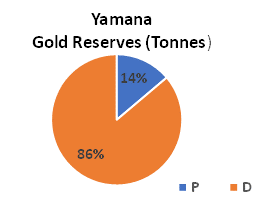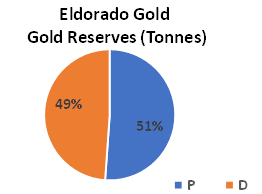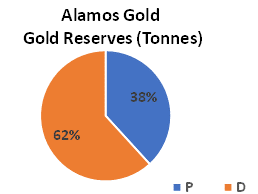
Every so often I like to comment on issues related to the way the mining industry does things. This is one of those posts.
Currently the mining industry reports their exploration results as either Mineral Resources or Mineral Reserves. In my opinion, these two categories do not adequately reflect the reality of the current mining environment. I would suggest using a three category approach, as will be described below.
The implementation of this approach would not result in any more technical effort. However, it would provide clarity for stakeholders and investors and compare companies on a more equitable basis.
The issue
 In today’s world, it is an onerous task to permit, finance, build, and operate a new mine. This is a significant achievement.
In today’s world, it is an onerous task to permit, finance, build, and operate a new mine. This is a significant achievement.
An operating company will be generating revenue and should be recognized for that big step. Hence does it make sense for an operating company to report Mineral Reserves while a junior company that has simply completed a pre-feasibility study to also report Mineral Reserves?
Both companies could report identical Reserves, but those reserves would not be the same thing. One company has built a mine while the other may have spent a few months doing a paper study. One company’s reserves will actually be mined in the foreseeable future while the other company’s project may never see the light of day. Yet both companies are allowed to present the same Mineral Reserves.
As a mine operates, the remaining ore reserves will deplete over time. However, a company can add to their reserves by finding satellite ore bodies or converting inferred material into a higher classification. The net of these adjustments will be reflected in the corporate Mineral Reserve Statement for all their operations.
A company can also increase the corporate Mineral Reserves simply by completing a pre-feasibility or feasibility study on a new project. However, is this a true reflection of the Reserves upon which the company should be evaluated?
Suggestion
 I would suggest that the three reporting categories be used instead of two, described as follows:
I would suggest that the three reporting categories be used instead of two, described as follows:
1 – Mineral Resources (insitu): This category is the same as the current Mineral Resources being reported according to NI43-101. It is based on reasonable prospects for economic extraction. Hence open pit resources would be reported within an optimized shell and underground reserves within approximate stope shapes. No external dilution or mining criteria would be applied, as is the current approach.
2 – Economic Resources: This would be a new category that would simply be the outcome from a pre-feasibility or feasibility study, which is currently being labelled a “Mineral Reserve”. This Economic Resource would incorporate mining criteria, Measured & Indicated classes only, a mine plan, and an economic analysis. The differentiation from Reserves is because the mine is not built yet.
3 – Mineral Reserves: This highest-level category could be reported only once a mine has reached commercial production. The Economic Resources would automatically convert to Mineral Reserves once production is achieved. As the mine continues to operate, and as new ore sources are identified, the Mineral Reserves would increase / decrease. The Mineral Reserves would represent the remaining ore tonnage at operating mines and only that.
This three-category approach would help separate mine operators from junior development companies. The industry should recognize the difference between companies and projects at different life-cycle stages and that they are not all directly comparable. A junior explorer could be reporting huge reserves, but without a mine being there, should that company be compared to a mine operator that has similar reserves?
This approach would identify situations whereby a company suddenly reports a sizeable increase in Reserves. Is it because they found more ore at an existing operation (a great event) or because they did a paper study on a new project?
As a clarification, if a mine gets placed onto care & maintenance, likely due to poor economics, then the remaining tonnes at the mine would no longer be considered Mineral Reserves and may have to revert to Economic Resources, although even that would be questionable.
Examples
Out of curiosity I randomly selected three companies (Yamana Gold, Eldorado Gold, Alamos Gold) to compare their total Mineral Reserve tonnages based on their operations versus study stage development projects. The results are show in the images below. The percentage of Reserves provided by their producing (P) mines varied and ranged from 14% to 51%. A significant proportion of their Reserves (49% to 86%) are still at the development (D) stage. One or two large study-stage projects can boost the corporate reserves significantly. This is not immediately evident when looking at the total Mineral Reserves being reported.
For most junior miners 100% of their Reserves are still at the study-stage. They should not be able to declare Mineral Reserves and appear on an equal footing with mine operators. Their company should only be comparable to other companies with advanced study-stage projects.
Conclusion





The whole resource/reserve thing boils down to levels of risk on what is in the ground and whether it can become metal based on the assumptions made in the PFS/FS. I’m attracted to your suggestion because the level of risk is lower in an operation. In an operating mine, among other things you know the capital cost, the operating cost, mill recovery and have some reconciliation data available to firm up the reserve estimate. These are significant risks, even after a FS has been completed. So yes, I like this approach.